
Conversation

🥳 Feedback Received!
Thanks for taking a moment to share your thoughts — it genuinely helps us make each chapter sharper.
What happens next:
- Your feedback goes straight to our product team.
- We’ll use it to refine lessons, clarify examples, and make the program even more useful.
Appreciate you helping make this program better for everyone.
Ready for your next challenge? 👇
Content Distribution
Remember that there are two parts to successful content marketing: creation and distribution. Without any distribution efforts, even the best content won’t reach its target audience.
Here are the three ways to categorize distribution:
- Owned: When you leverage your brand’s own channels (e.g., social media accounts) to publish and promote content
- Acquired: When you appeal to or work with other brands to promote content on their owned channels
- Organic: When other parties promote your content voluntarily, without any efforts from your brand
Organic distribution is great because it requires no effort from you—but it doesn’t come easily.
Getting widespread distribution requires upfront work. As your brand’s reputation develops, organic content distribution becomes more likely. Strangers share your content on social media, and other websites link to it.
To position your company for this, we’ll focus on how to distribute content through owned and acquired channels.
Distribution tactics
There are two common tactics for promoting content:
- Repurposing: Modifying content for another channel or as a new format
- Cold outreach: Contacting people you don’t know, usually through email or social media
These tactics will come up as we discuss different distribution channels.
Distribution channels
There are four key channels for distributing content:
- Websites
- Newsletters/email
- Social media
- Online communities
Here’s a quick overview of the different methods:
Websites
Two ways to distribute content through your site:
- Repurpose content as blog posts: This strategy is for content that isn’t already on your site. For example, Robinhood repurposes its Fireside Chat video series from YouTube as individual blog posts. You can do the same with infographics, videos, podcast episodes, and anything else that doesn’t already live on your blog.

- Syndicate blog posts on Medium: Republish blog posts from your site onto Medium using the platform’s import feature. Then submit your content to relevant Medium publications to amplify its reach.
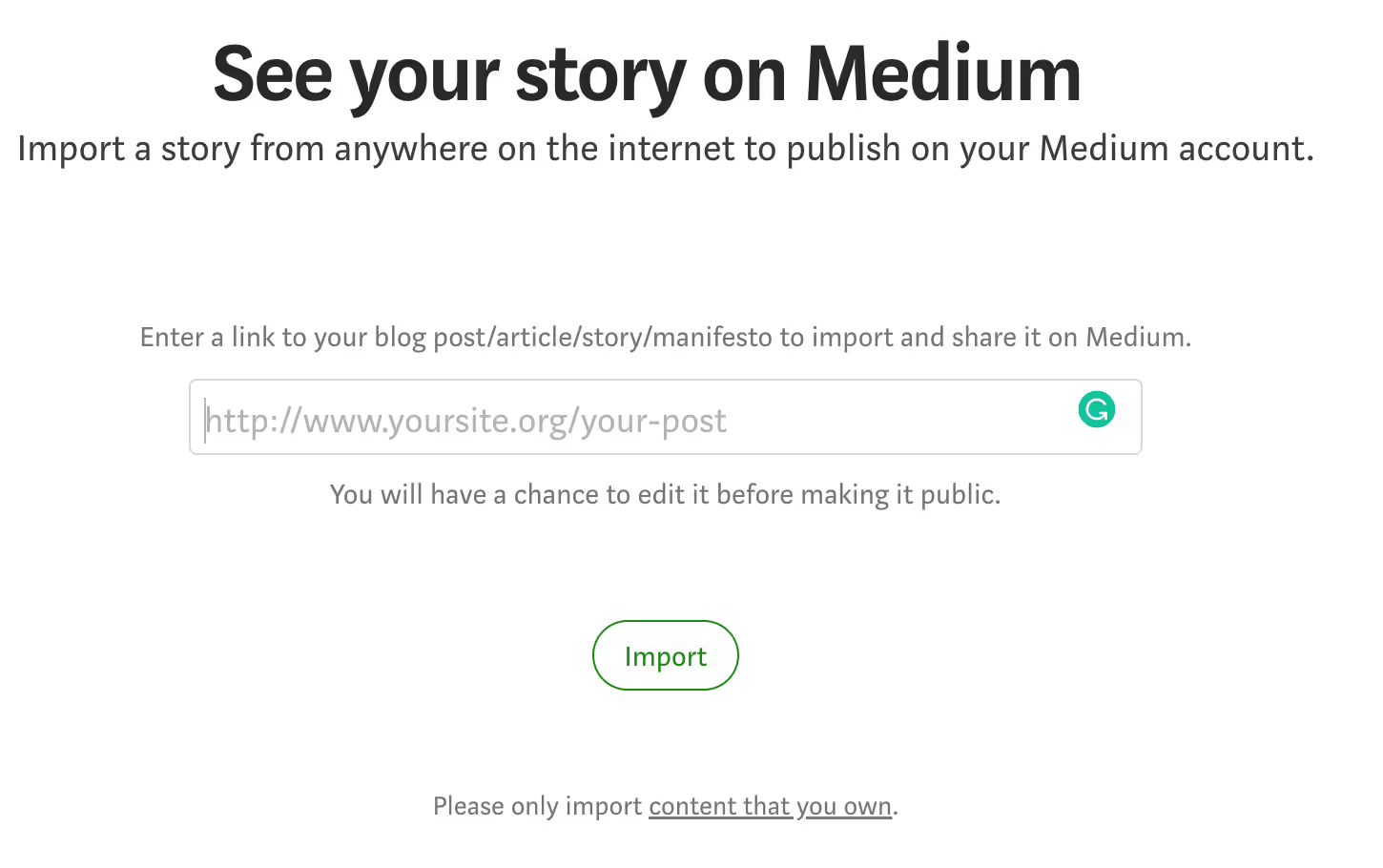
You can also promote content through other websites (acquired distribution) in a few ways:
- Guest blogging: A guest post is a blog post created by your brand for another site, and usually includes a link back to your site. Guest posts are often used for SEO-based content strategies because Google considers links from reputable sites as a ranking factor.
- Mentions: A mention is a link to your brand’s content on another website. Brands can get mentions through outreach to websites, influencers, and journalists. You can also use platforms like HARO to connect with journalists interested in your industry.
- Curated posts: Some websites compile original content from multiple contributors into a single blog post. Brands can pitch their content to be included, though some websites also independently select content to feature in these roundup posts. Others invite people to contribute.
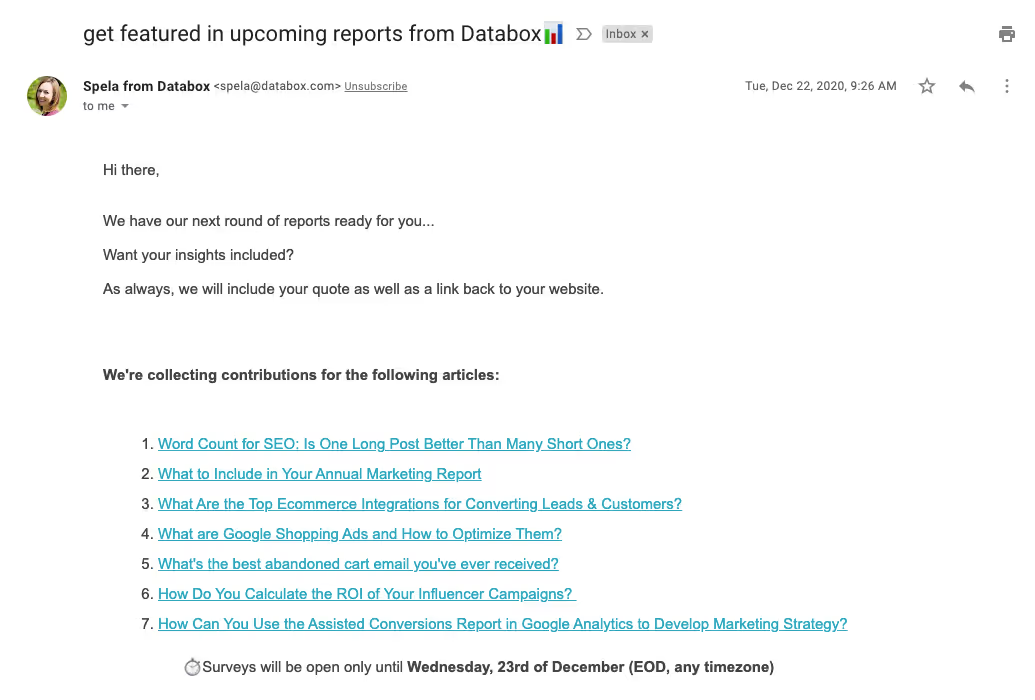
Newsletters and email
For brands with an existing email list, newsletters are an easy means of content distribution. Use them to share new pieces of content with existing subscribers. This usually involves repurposing some text from a blog post as a teaser to get readers interested.
For more distribution, encourage readers to share your newsletter with others, just as Medium does in its writer newsletter.
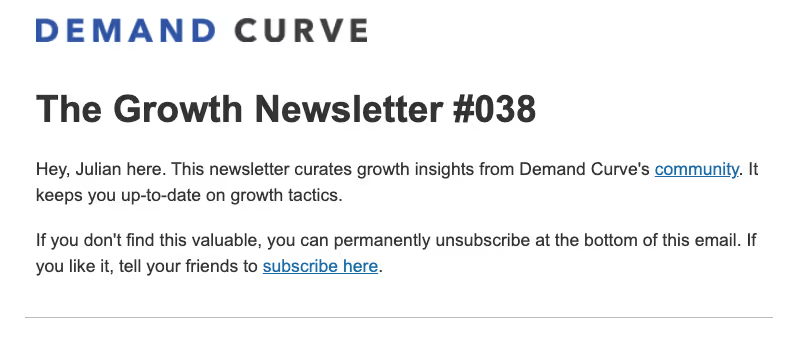
Many companies, like the Skimm and The Hustle, send newsletters with curated content. If you’re connected with businesses that do this, try reaching out to ask for your content to be included. Or use cold outreach to pitch them on including your content.
Social media
You can leverage social media for content distribution through your brand’s business page, personal accounts, and social groups.
Important note: Posting a link to your content on social media isn’t enough to get users to click or share it. You must also create unique copy for each platform explaining why your content is worth checking out.
For example, here’s how Betterment promotes one of its blog posts on Facebook.
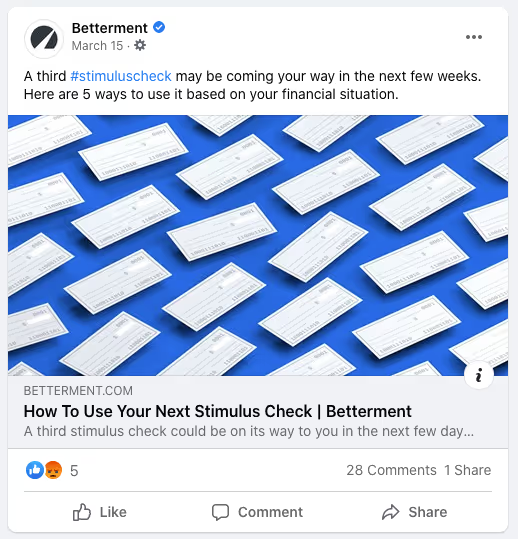
It’s short and to the point, and it also tags #stimuluscheck to make it visible to anyone interested in this topic.
Businesses just starting out may not have a strong presence on social media. In that case, use your personal social media accounts to share content.
Besides business pages, brands can also promote content through social media groups. You can find relevant groups that already exist or create a community for your users. For example, Airbnb encourages its hosts to connect and share tips with one another in Facebook groups.
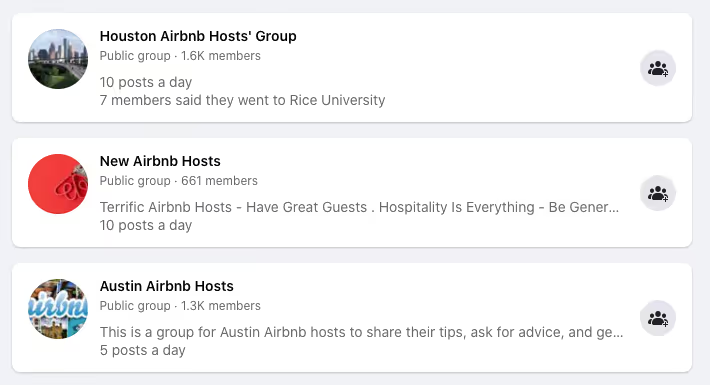
Groups are a great place to engage users and share your brand’s new content. However, it’s important to avoid being overly promotional or sales-y. Instead, focus on explaining why a piece of content is valuable to get engagement.
Instant Pot created a Facebook community to share recipes and cooking tips.

Important note: self-promotion is usually frowned upon in these communities. Focus instead on explaining why a piece of content is valuable to get engagement.
Online communities
These are interactive platforms where users can post content, discuss it, and even vote on it, including:
- Quora
- Product Hunt
- Hacker News
- Growth Hackers
- Relevant Slack groups (find them on Standuply or /r/SlackHangouts on Reddit)
Join existing online communities or create your own to interact with potential customers and share your content.
But like social media groups, don’t overtly promote your content. For example, Reddit’s guidelines advise a 9:1 ratio, in which “only 1 out of every 10 of your submissions should be your own content.” Add value first, then share your content.
Amplifying content with paid marketing
We don’t recommend this approach for most businesses. It’s very difficult to make paid acquisition work by sending people to articles instead of to landing pages.
Specifically, it takes a lot longer for people to buy your product when they reach you through an article. But it costs just as much to run an ad that points at your landing page. You’re bidding on the same keywords and targeting the same audience. It’s just that the URL and ad copy is slightly different.
In other words, your CPC (cost per click) stays the same. So you may as well get paid sooner and point your ad at your landing page. Let your content’s SEO and other marketing efforts slowly warm leads so that your paid ads are more effective.
There are only a couple cases where you’d want to run ads to an article instead of to your landing page:
- When you know your customer will need to read a lot of information written by you to buy from you, and you can’t stick it all in your landing page.
- When you need to build a lot of trust with your customer before they buy from you, and you can’t build trust purely through a sales call, a demo, testimonials, or a landing page.
This is most often the case for complicated, high LTV products. With them, we’ll point ads at content to help educate them on the product. Then we’ll retarget them with ads that point to our landing page. Because they’re more educated on the topic, they should be more likely to convert at this point.
If you’re a B2B product, LinkedIn is a particularly good ad channel for this — after someone clicks an ad, you’ll want to “gate” the content by asking for someone’s email address before they can see it. This is, in fact, one of the only ways LinkedIn ads can be profitable.
You can also link to your articles on other publications to teach people about your product using a platform like Taboola. You’ve probably seen Taboola ads before at the bottom of news articles:

The best distribution channel for your business
We’ve found that most companies get faster distribution results by first leveraging their brand relationships and user affinity.
- Brand relationships: You and your brand’s relationships with other companies, influencers, or thought leaders
- User affinity: Your brand’s existing presence on social media and its email subscriber list
Some acquired distribution channels rely on cold outreach to distribute content. Though PR tools like BuzzStream and Hunter can automate it, cold outreach usually has a low ROI, with an average response rate between 1% and 3%.
Why does cold outreach usually fail?
- Your intended recipient never reads your message. You contact the wrong person or your message lands in the spam or junk folder. Or, your recipient ignores your message.
- Your message isn’t compelling. It doesn’t make a strong case for why your content matters.
- Your message isn’t personalized. It uses generic template language.
People prefer familiarity, which is why we recommend that brands use existing relationships and user affinity for distribution. Instead of spending time and effort on cold outreach, look for opportunities in your network.
Consider:
- How many email subscribers does your brand have?
- Does your brand have a strong presence on any social media channel?
- What social media accounts are you personally active on?
- Do you have any relationships with other brands, e.g., parent/sister companies, an incubator?
- Do you have any relationships with journalists, influencers, or thought leaders?
- Are you part of any online communities?
Companies with strong brand relationships and user affinity have an advantage in distributing their content.
Some companies don’t have strong brand relationships or user affinity—but companies are made of people, who almost always have personal networks that can be tapped into. Even companies without brand relationships and user affinity can still leverage their personal networks for distribution.
For companies with fewer brand relationships and less user affinity, begin by promoting content on your personal social media accounts. Join online communities in your industry and become an active participant. Over time, you’ll build new relationships that you can then use for content distribution.
For example, Eric Bandholz, the founder of Beardbrand, used Reddit to build a community of around 300 members for his blog and YouTube channel before even launching an ecommerce shop.
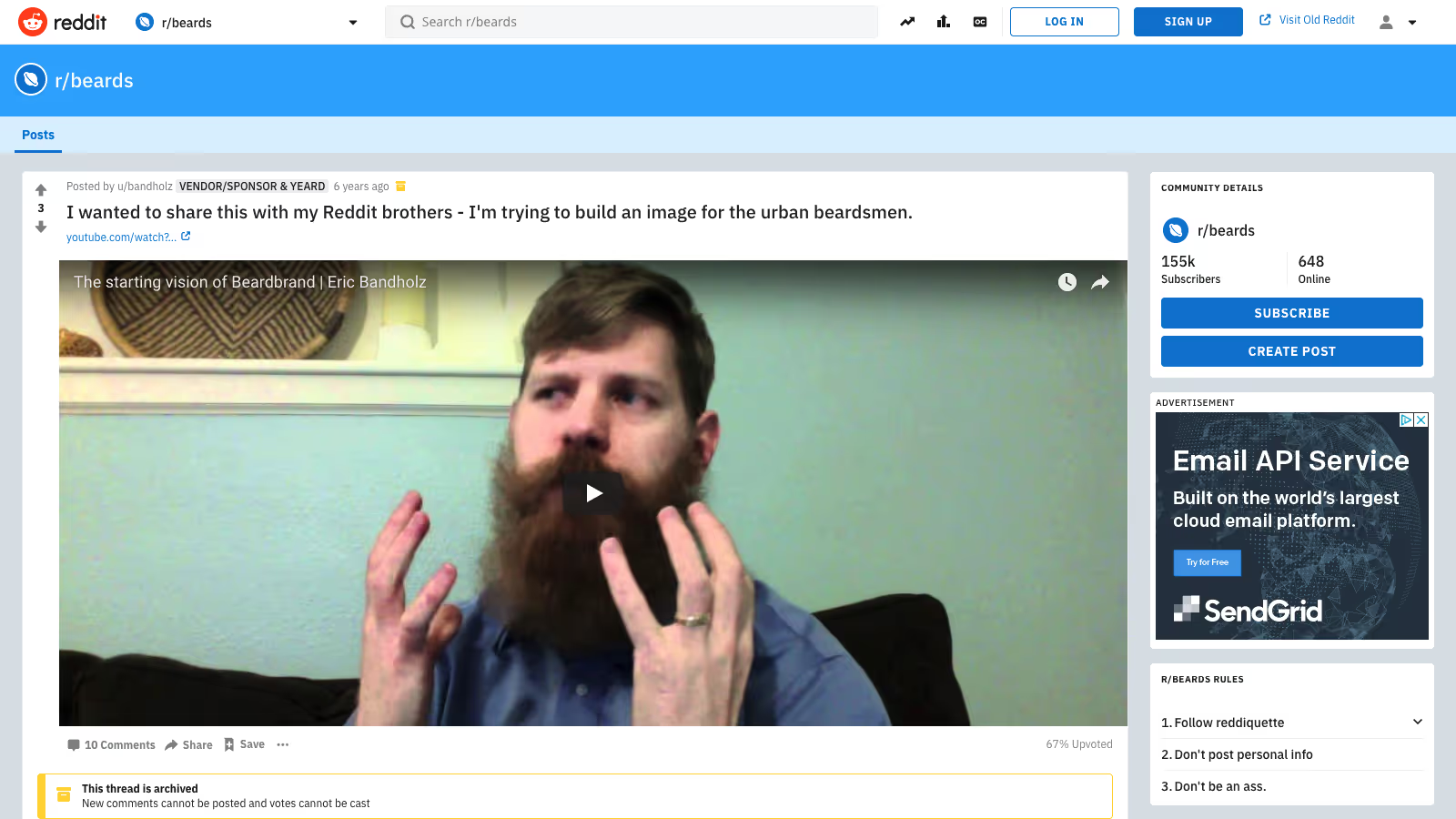
Since then, he’s consistently been active on Reddit, sharing his personal experiences building Beardbrand and other business ventures on r/entrepreneur. Although he talks about Beardbrand, Bandholz doesn’t do so promotionally—instead, a lot of his content is about helping other entrepreneurs, e.g., his post on what it’s like to go on “Shark Tank.”
Posting on Reddit not only helped spread the word about Beardbrand, it also developed a network of readers interested in Bandholz and his work.
The bottom line: leverage existing connections first instead of doing cold outreach.


